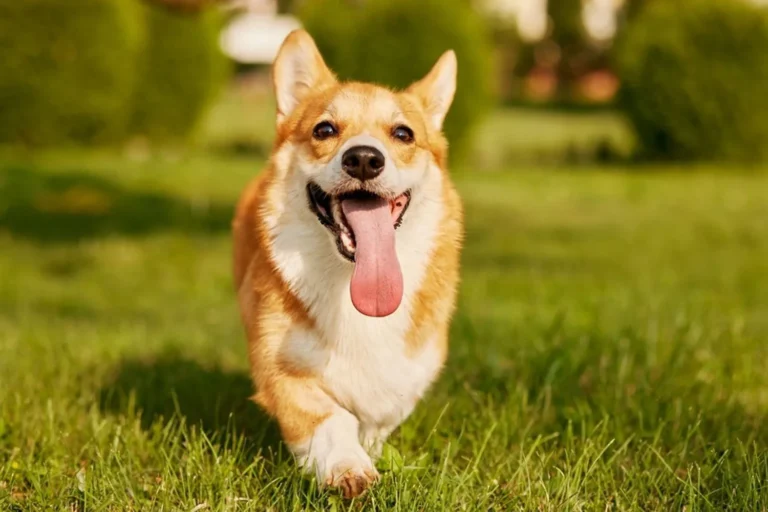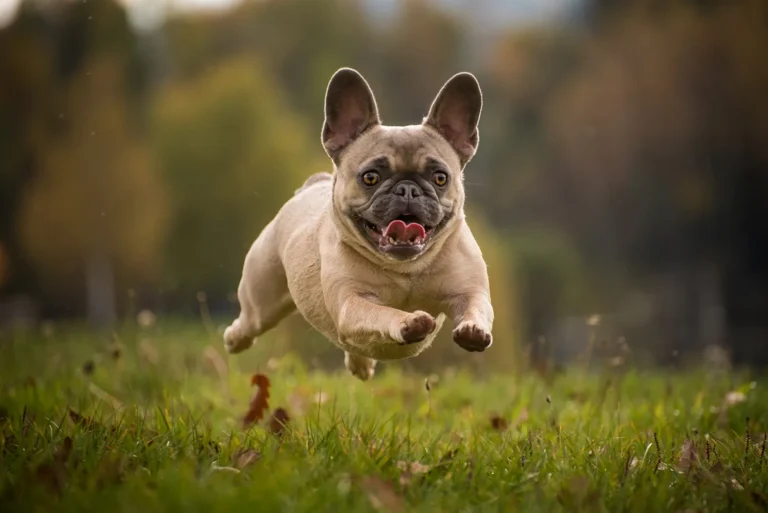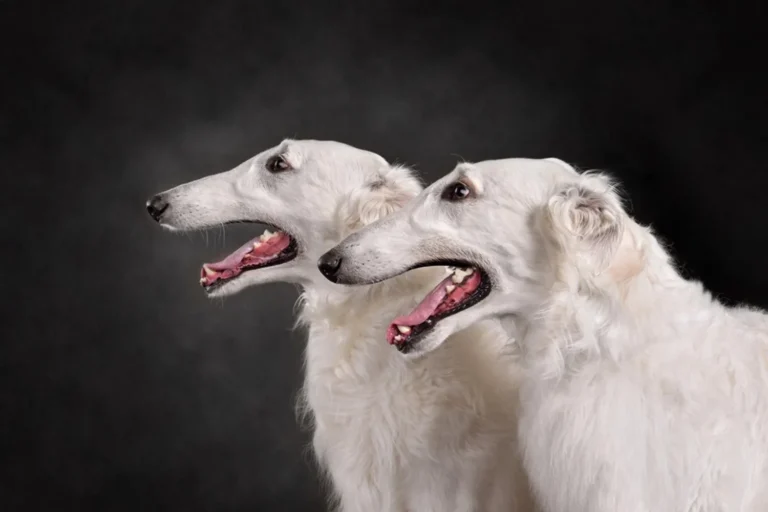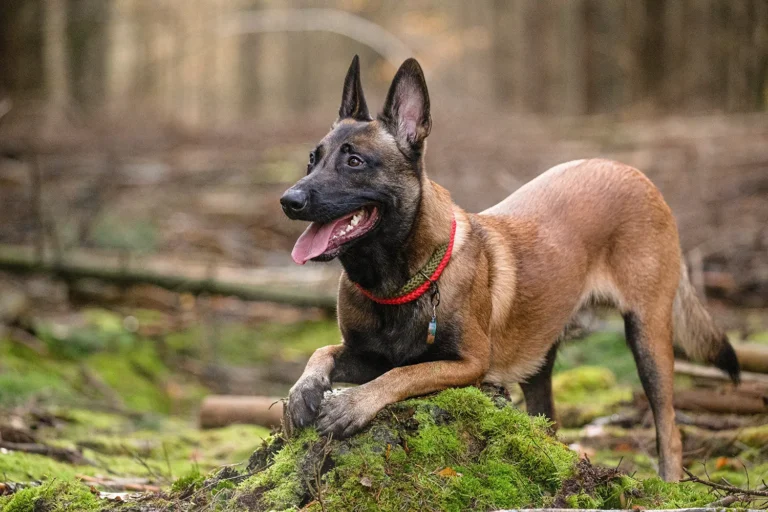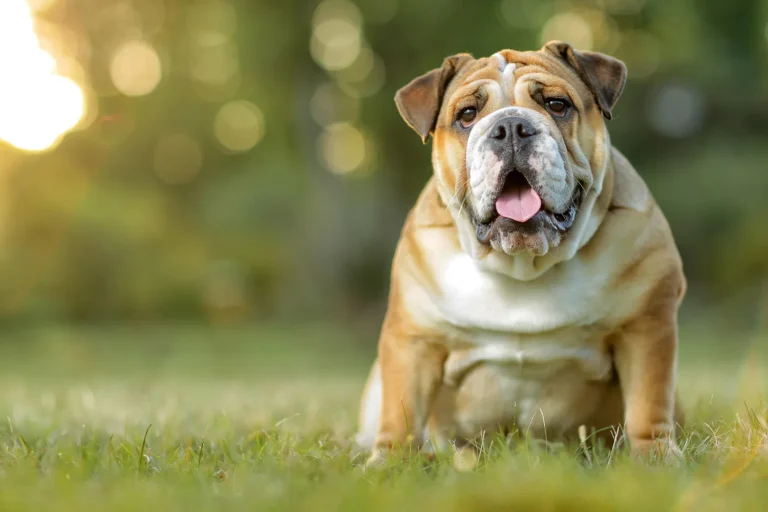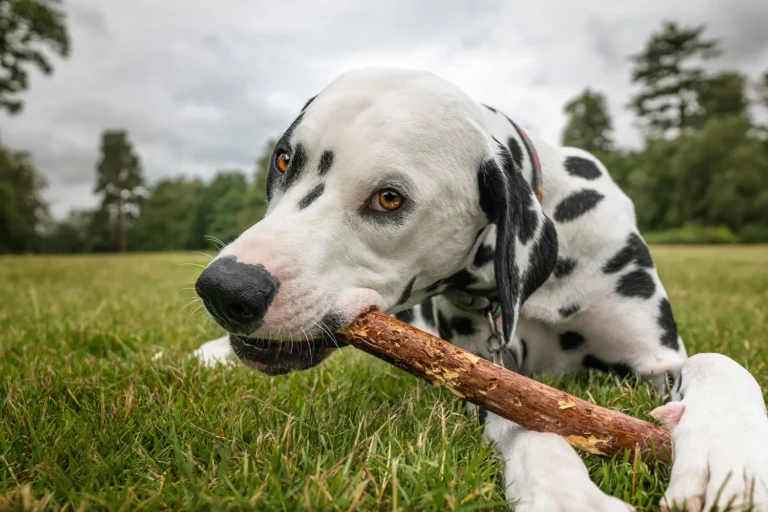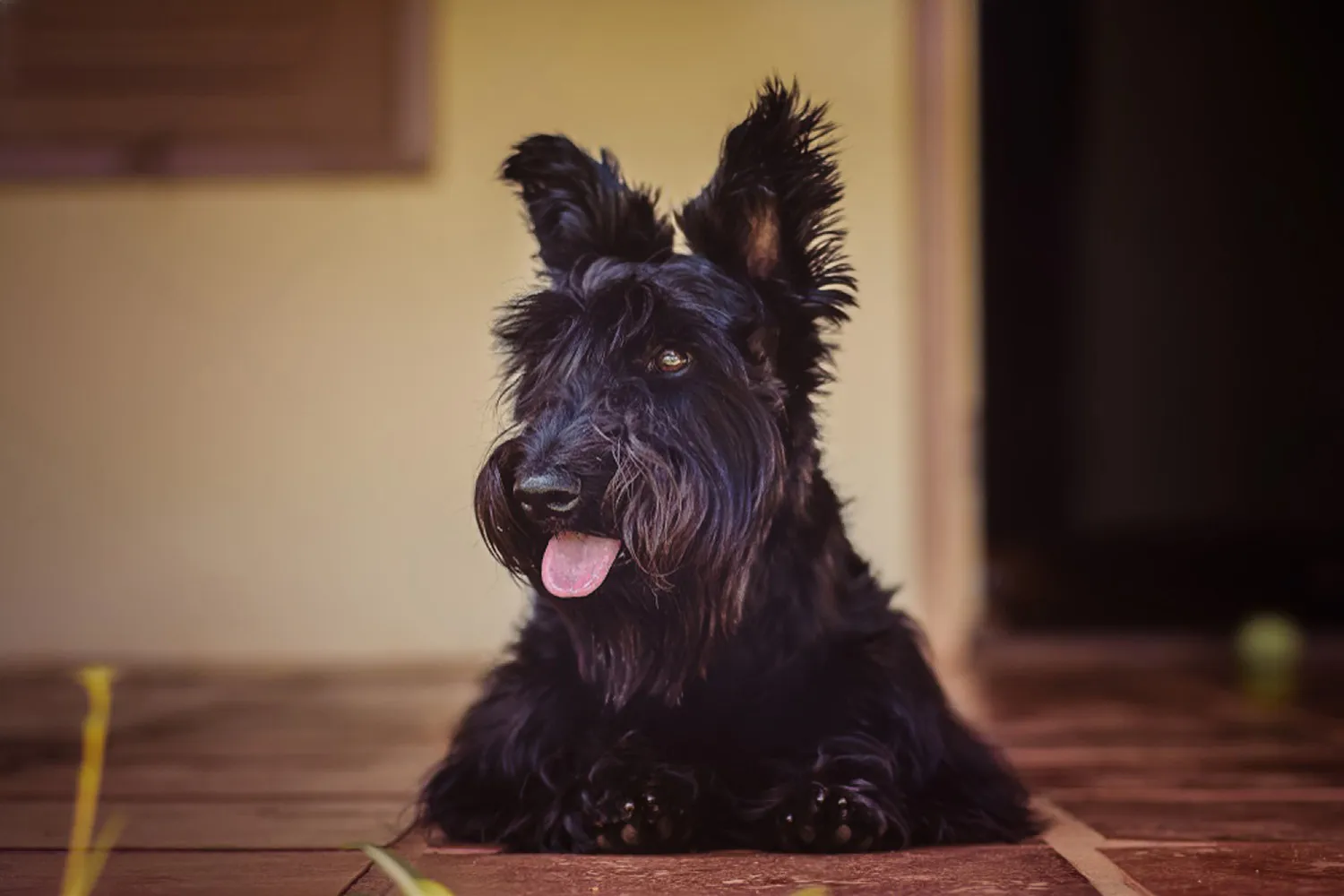
Scottish Terriers are among the oldest breeds, wearing their history with pride loyal as shadows, brave when it counts, and surprisingly adaptable.
Give them steady routines, brisk walks, and puzzle toys. My friend’s Scottie would patrol the window like a tiny sentinel, then curl at my feet vigilant yet wonderfully cuddly.
History and Origin of the Scottish Terrier
For a breed that feels as old as the hills, the Scottish Terrier’s story is delightfully tangled. I always picture a bearded little silhouette bracing against the Highland wind, nose twitching for trouble that’s the Scottie spirit in a nutshell. These tough, short legged terriers were shaped by the Scottish Highlands themselves, where farmers and gamekeepers needed small, fearless dogs to hunt foxes, chase off vermin, and even work around water to deal with otters.
Long before the neat breed names we know today, there was the Old Scottish Terrier now extinct, but widely considered the foundation for many terrier breeds. A breeder I met at a show in Edinburgh laughed as her Scottie tried to excavate the ring mat and told me, “That digging? It’s a centuries old job requirement.” Those early dogs weren’t bred for looks; they were bred to get into tight places, think independently, and get the job done.
By the 17th century, some of these terriers were sent to France, and many believe that line helped shape the modern Scottie we know and love. Then came the great muddle of the 1800s: Highland Terriers, Skye Terriers, and Cairn Terriers were all lumped under the umbrella of “Scotch Terriers,” with an Aberdeen Terrier strain in the mix too. I once flipped through an old dog book in a secondhand shop and chuckled at how similar the woodcuts looked same sturdy bodies, same keen eyes. No wonder it was hard for fanciers to agree on which dog should carry the official Scottish Terrier name.
Things started to settle with the formation of the first Scottish Terrier Club in 1882, and not long after, in 1883, the breed made its way to the United States. Popularity followed, helped along by presidential households most famously Franklin Roosevelt’s Scottie, who charmed a nation, and even Dwight D. Eisenhower’s family kept Scottish Terriers. My grandfather used to point out Scottie figurines on mantelpieces, saying they reminded him of that era iconic little dogs with big reputations.
By the end of the 1900s, the terriers of Scotland were officially sorted into distinct breeds: the Scottish Terrier, the Skye Terrier, the Cairn Terrier, and the West Highland White Terrier joined the roster. If you’re thinking of living with a Scottie, remember that adventurous resume. Give that nose a job with scent games, offer sturdy toys for determined jaws, and, if you value your flowerbeds, designate a legal digging zone. These dogs are history wrapped in wiry fur independent, courageous, and happiest when you let them do what they were born to do.
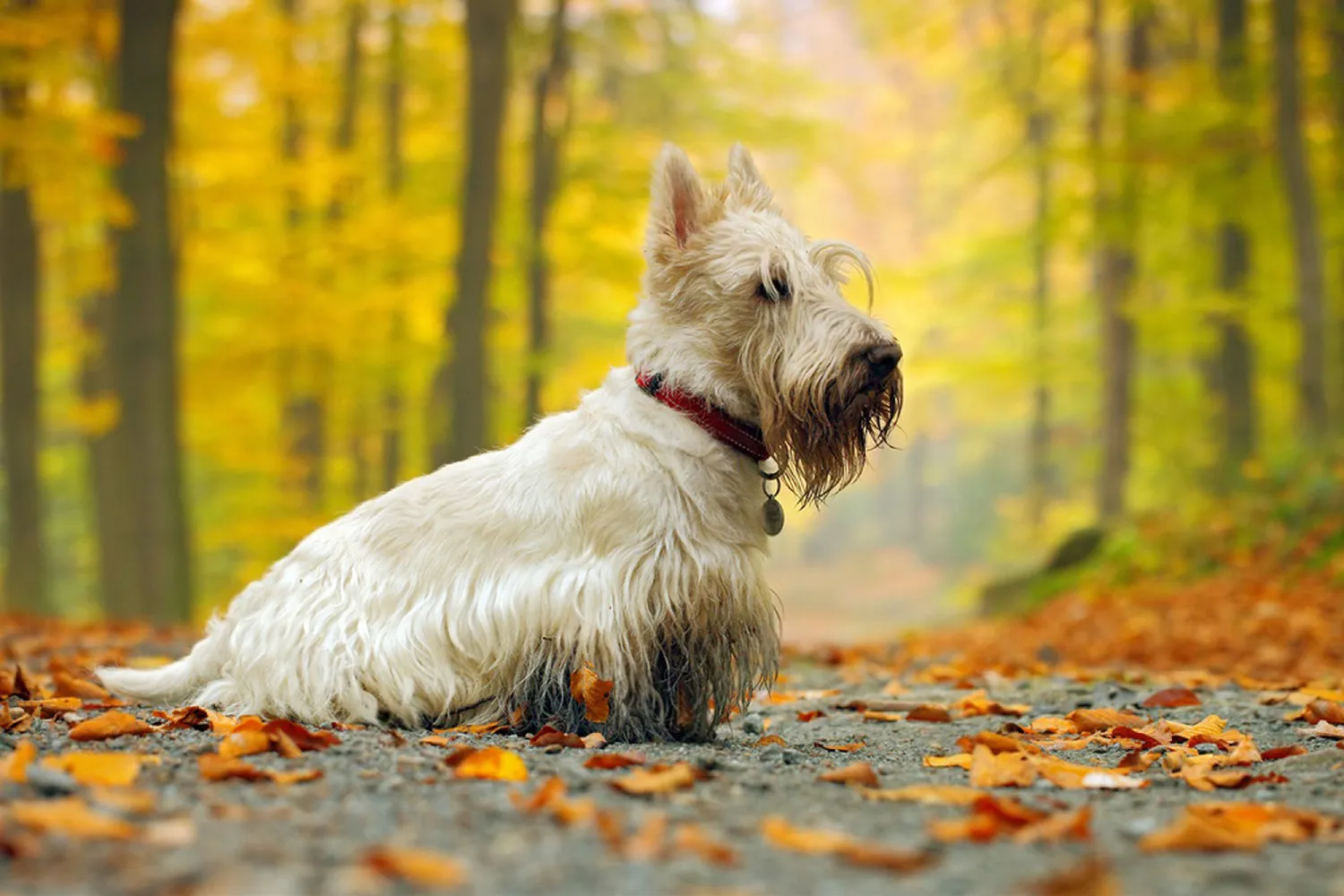
What Is a Scottish Terrier?
Picture a low to the ground little powerhouse with bold eyebrows, a dignified beard, and a determined trot that’s the Scottish Terrier. Their history is a bit tangled because Scotland had many types of working terriers, but the Scottie stood out as a small, sturdy dog bred to hunt. That instinct still shines through today. I once watched my neighbor’s Scottie freeze at a faint rustle in the garden, then spring into action with that classic Scottie confidence squirrels beware.
As companions, they’re loyal and entertaining, but their smarts and independence can make them, well, a bit opinionated. Keep training short, fun, and purposeful; think high value treats, scent games, and puzzle toys that let them “work.” I’ve had the best luck when I make it their idea ask for a sit, then celebrate like they just discovered fire. A secure yard and a leash are wise, because a Scottie following a scent turns into a tiny freight train. Give them a job, keep it upbeat, and after the adventure, they’ll happily curl up like a warm brick by your feet.
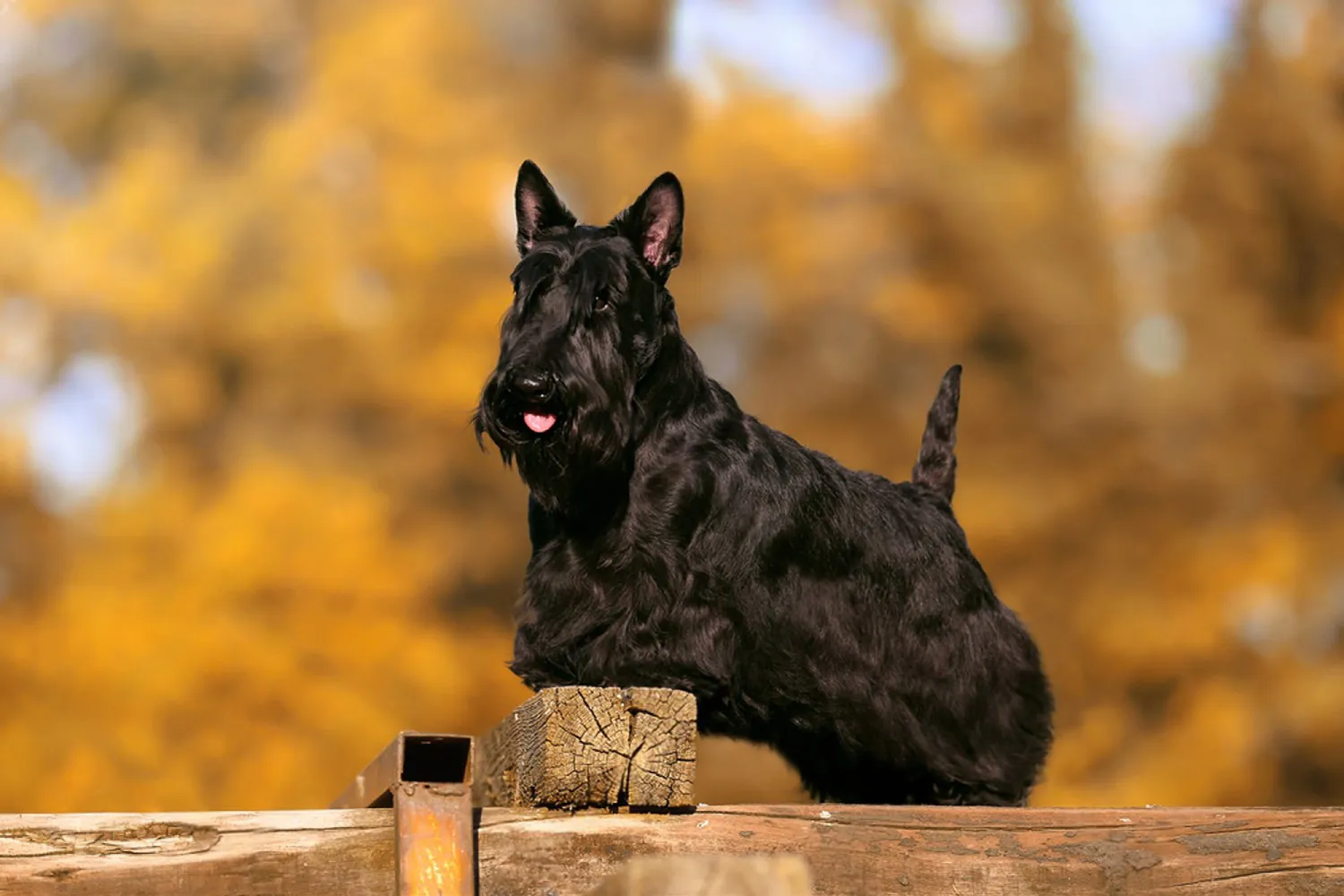
Who Is a Scottish Terrier Best For?
Scottish Terriers are wonderfully adaptable little characters. I’ve seen them thrive in city apartments and in sprawling suburban homes. A friend of mine has a Scottie in a tiny downtown studio; he trots down the hallway like it’s his personal runway, perfectly content with a couple of brisk walks and a good window perch to watch the world go by. Give them routine, a comfy spot, and a bit of purpose, and they settle in almost anywhere.
If you’ve got a busy schedule, a Scottie can be a great match. They’re famously independent and don’t need to be glued to your side every minute. When I used to dog sit a Scottie in a fourth floor walk up, he was just as happy napping under the desk while I worked as he was following me to the kitchen for a snack. That said, independent doesn’t mean no attention think quality time instead of constant entertainment. A couple of focused play sessions, a training game, and a good sniffy walk go a long way.
For the super athletic crowd, though, Scotties aren’t built to be marathon partners or all day trail buddies. They enjoy exercise, but more in the “let’s take a purposeful walk and then patrol the yard” way than “let’s summit three peaks before lunch.” I like to say they’re better as your pint sized watchdog than your endurance teammate. If your idea of a perfect weekend is a long run or mountain biking, a Scottie might prefer cheering you on from the porch and joining you for a short, shady stroll afterward.
Families with kids often ask me about Scotties. They can be very good with children, especially when kids are old enough to be respectful and calm. They don’t love rough handling, poking, or being treated like a stuffed toy. I always suggest teaching children how to give a dog space and read their signals. Supervised, gentle interactions help Scotties show their best manners and they’ll happily join in for story time on the couch once the energy settles.
These little dogs have a working past, and it still shows. They thrive when given jobs anything from simple daily “missions” like carrying a toy to their bed to trying dog sports. I know a trainer who has a Scottie that lights up during scent work and barn hunt; you can practically see the pride in those bright eyes. Even puzzle feeders or a few minutes of basic obedience keep their brains busy and their spirits satisfied.
One practical note: secure your yard. The Scottie prey drive is real, and squirrels are their sworn rivals. If you’ve got outdoor space, a sturdy fence is a must. I once watched a Scottie spot a darting squirrel and pivot with such determination you’d think he trained with a pit crew. Keep walks on leash, check gates, and consider adding a bit of dig proofing if your yard invites exploration.
In short, a Scottish Terrier is a great fit for people who want a loyal, self possessed companion adaptable to city or country life, happy with moderate activity, respectful kids, and a daily “job” to call their own. Give them structure, a sense of purpose, and a secure space, and they’ll be the steadfast little sentinel of your home.
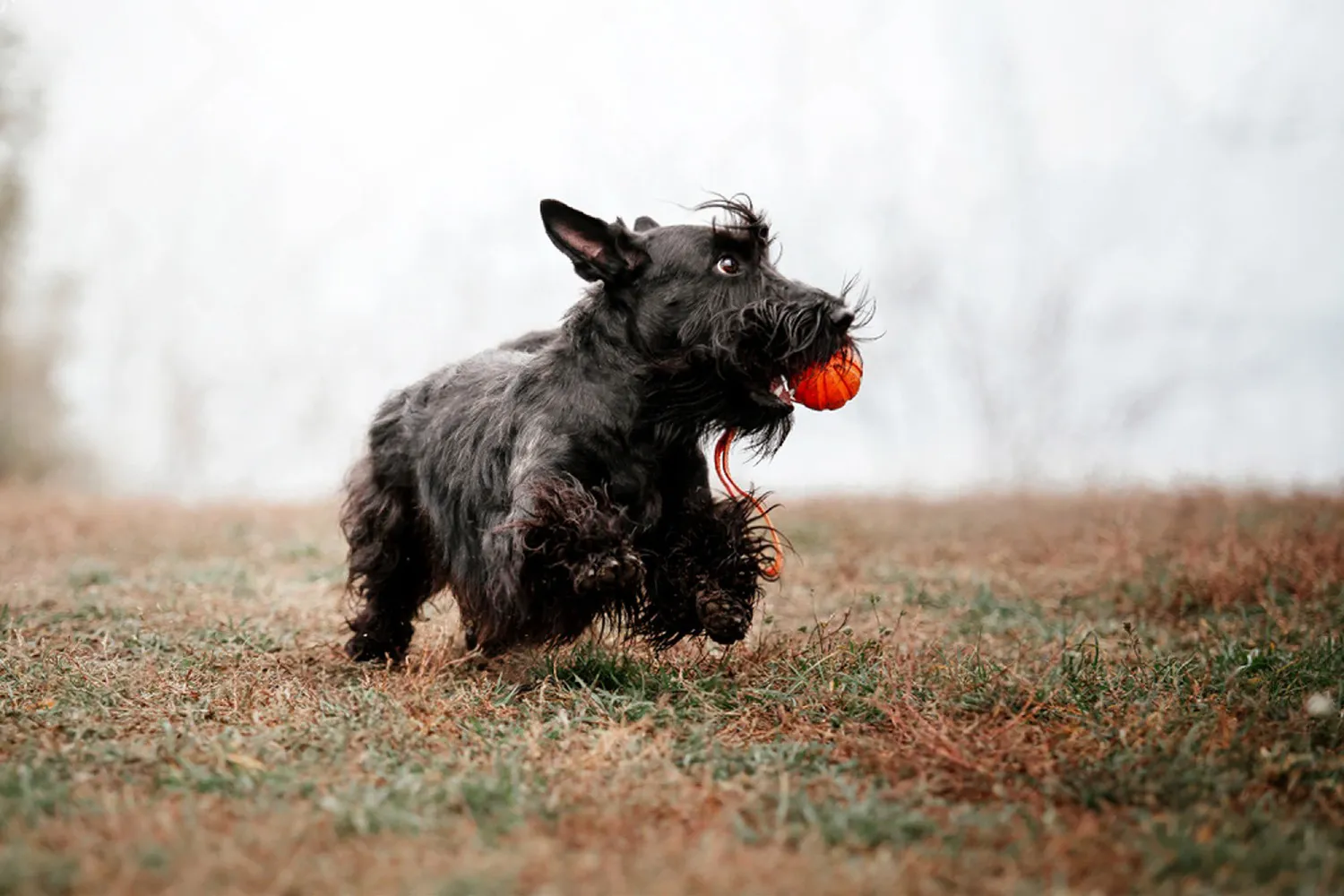
Scottish Terrier Grooming & Shedding
You can spot a Scottish Terrier from a mile away: sturdy little body, proud stance, and that iconic, wiry jacket. Most folks picture them in glossy black, but I’ve met Scotties in smoky gray, brindle, and the sweetest wheaten one wheaten boy I met at a Saturday market had kids calling him a tiny golden lion. No matter the color, their double coat is the star: a hard, wiry top layer with a soft, insulating undercoat underneath.
Scotties don’t shed much, which is a blessing for your furniture, but it does mean the coat needs you to step in. A solid weekly brushing keeps things tidy for most pets, and if your Scottie is hitting the show ring, daily is the way to go. I like to set up on a non slip mat and break grooming into short sessions. Tools that earn their keep: a stiff brush to lift out debris, a wide toothed comb to work through the beard and leg furnishings, a hound glove for smoothing and catching loose hairs, and a pair of scissors for quick touch ups. Start by brushing with the lay of the coat, comb through the skirt and beard, finish with the hound glove, and snip any flyaways that try to spoil that crisp Scottie outline.
Regular brushing does more than keep them neat it helps you spot fleas early. Scotties can be dramatic scratchers, and some will chew themselves threadbare if they’re itchy. One summer my neighbor’s Scottie worried a patch on his flank nearly bald. A consistent brushing routine, a flea comb during checks, and a chat with the vet turned it around before it became a bigger issue. While you brush, part the coat and peek at the skin for redness or hot spots; catching things early is half the battle.
Now, about trims. This breed’s grooming routine can be a bit of a project, so don’t hesitate to book a professional if you’re unsure or short on time. The first time I went to a groomer for a Scottie, she walked me through how to tidy the eyebrows into that signature “fall” and keep the beard clean without losing the shape it was worth every minute. If you prefer your pup to have a shorter look, plan on quick trims at least twice a week to keep the coat soft and neat think tidying the skirt, feet, and edges so the silhouette stays sharp. If you like a longer coat, you can get away with just a few trims a year to maintain shape, with regular brushing doing most of the heavy lifting in between.
Don’t forget the little things that add up to a healthy dog. Work tooth brushing into the routine, keep nails trimmed so they don’t click on the floor, and do a quick check of eyes, ears, and nose. I keep cotton pads and a dab of ear cleaner handy for gentle wipe downs, and I reward patience with a tiny treat after each step. A breeder I spoke with in California told me her secret is ending every session on a good note two minutes of play or a short stroll, so the dog looks forward to next time.
With a rhythm and the right tools, Scottie grooming becomes a calm ritual. Put on a podcast, keep your comb within reach, and enjoy that moment when your little shadow hops down looking polished and proud.
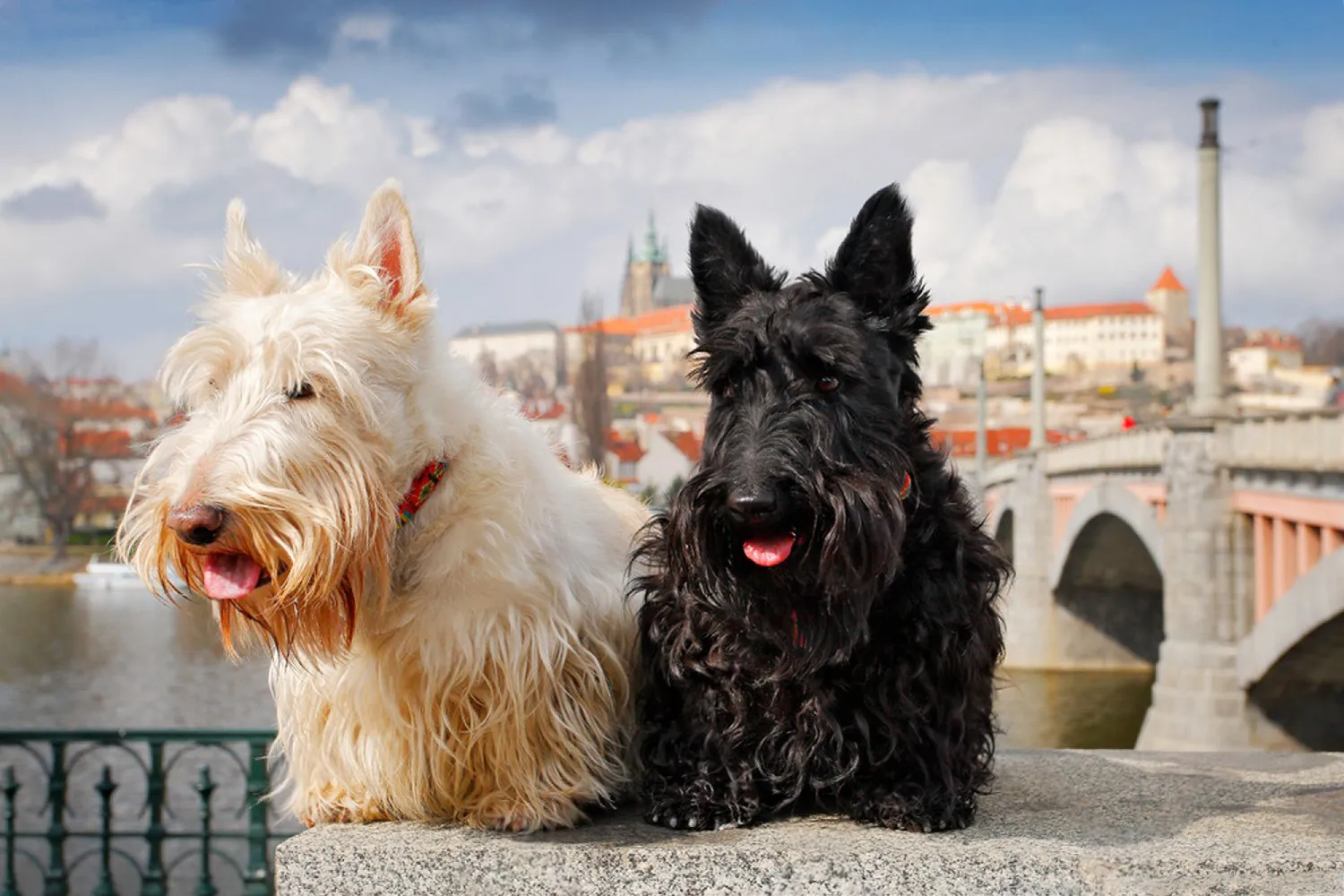
Do Scottish Terriers Bark a Lot?
For a small dog, a Scottie’s bark has real presence. It’s deep and sharp, the kind of serious sound that makes delivery folks pause at the gate and bigger dogs rethink their life choices. They carry themselves like big dogs crammed into compact bodies, and when they speak up, it’s with conviction. If a Scottish Terrier is barking, there’s usually a reason someone near the door, a shape at the window, or yes, the eternal nemesis: squirrels.
Scotties are natural watchdogs and fiercely protective of their people. Mine used to hop onto the front windowsill every afternoon, like the neighborhood sentinel clocking in for a shift. Strangers were met with a suspicious stare and a firm announcement. They can be very wary of newcomers and need time and gentle introductions to feel safe. I’ve learned to set visitors up for success: give the Scottie space at first, ask guests to turn sideways instead of looming, and let the dog approach on their own terms with a tasty treat waiting. With patience, they do warm up just not right away.
About those squirrels. Scotties were bred to hunt small game, so a twitching tail on a fence line can switch on “terrier mode” in a heartbeat. If there’s a squirrel in view, expect a chorus, sometimes non stop until the little acrobat is out of sight. That prey drive is part of who they are, so I channel it instead of fighting it. Short sniffy walks, a flirt pole in the yard, and hide and seek with treats do wonders. I also keep window film on the lower panes to cut down on backyard “TV,” and it’s amazing how much quieter the house is when the audience can’t see the show.
The good news is that Scotties are not typically mindless yappers. They’re loyal to home and family, and most of their vocalizing is purposeful. I like to teach a “thank you” cue after one or two alerts, I say thank you, then guide them to a mat for a reward. It tells them their job is done without scolding the watchdog out of them. Pair that with a “quiet” cue, lots of praise for calm, and consistent routines, and you get a smart little guardian with an on/off switch.
Early socialization is essential. Because their suspicion of strangers can slide into pushy or even aggressive behavior, start in puppyhood with positive experiences: calm meet and greets, gentle handling, and exposure to different places and sounds. Keep sessions short and upbeat. A well socialized Scottie still has that strong, confident voice, but it’s used wisely. And when you’re tucked up at home and hear that baritone warning, you’ll appreciate the built in security system just make sure it knows when to clock out for the night.
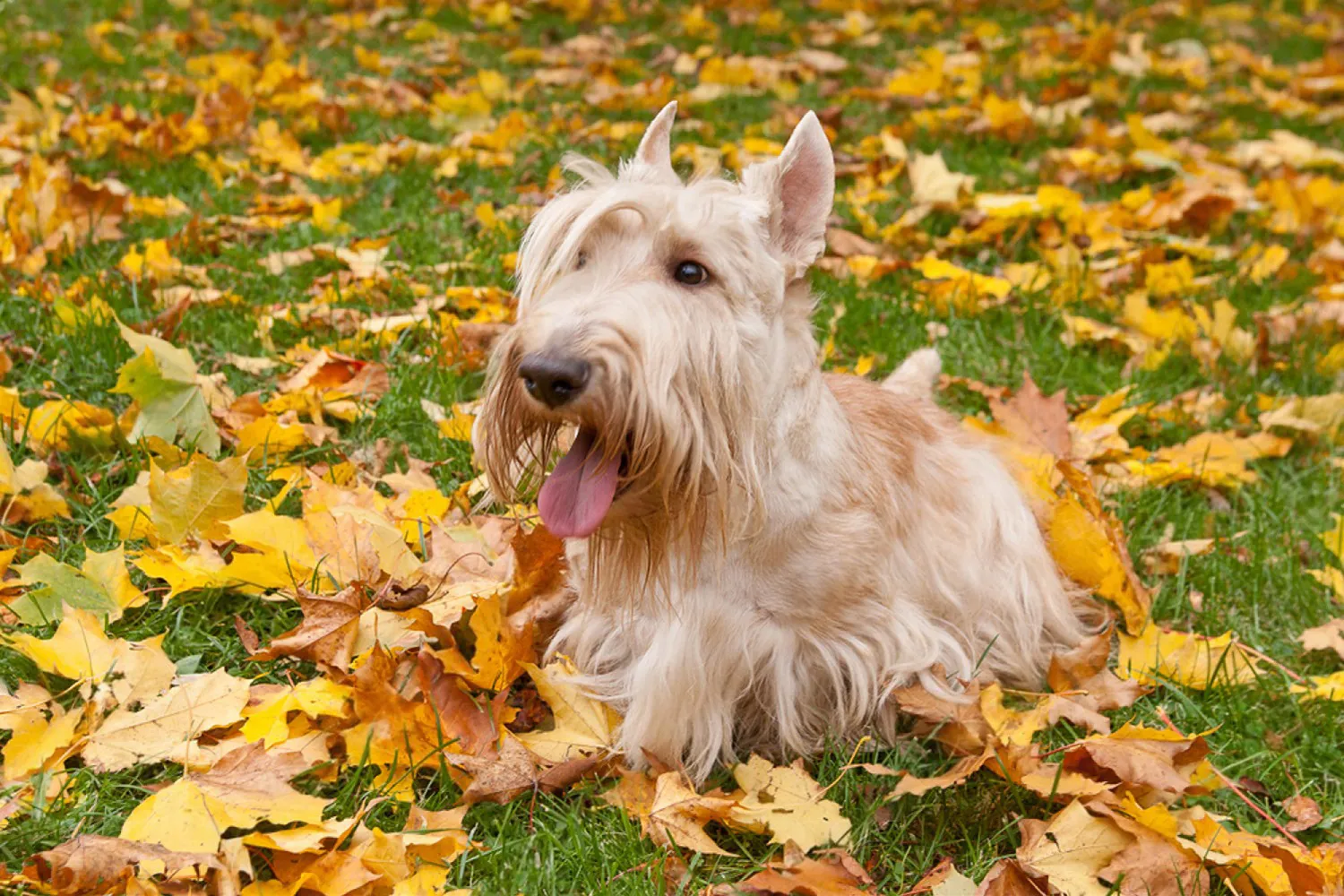
Average Weight and Height of a Scottish Terrier
Scottish Terriers pack a lot of dog into a small, sturdy frame. On average, males weigh between 9-11 kg, while females tend to be a touch lighter at 8-9 kg. They stand around 25 cm tall at the shoulder about 10 inches which is why they look so compact and low to the ground. If you’re more used to pounds, that’s roughly 20-24 lb for males and 18-20 lb for females. I remember the first time I picked up my neighbor’s Scottie, Fergus I figured he’d feel light because of those short legs, but he was surprisingly solid, like a cheerful little kettlebell with a beard.
That 25 cm measurement is taken at the withers (the top of the shoulders). A quick at home trick: have your Scottie stand square against a wall, rest a book flat on their shoulders, and mark the spot to measure down to the floor. For gear, chest girth often matters more than height Scotties have deep chests so when you’re choosing a harness, grab a measuring tape along their ribcage rather than guessing by weight alone. Also, don’t let the fluff fool you; that glorious coat can make them look bigger, but the scale tells the truth.
Healthy weight matters with this breed because they’re naturally muscular and low slung. You should be able to feel ribs with a light press and see a slight waist from above. If your Scottie is tipping the scales, try trimming treats, swapping in crunchy veggies, and adding a couple of brisk, sniff filled walks each day. They’re not marathon runners, but they do love purposeful walks and a bit of play. Most Scotties reach their adult size around the one year mark, give or take, and genetics can nudge them slightly above or below the averages. When in doubt, your vet can help you tailor feeding and exercise so that your little legend stays fit, feisty, and fabulously bearded.
https://en.wikipedia.org/wiki/Scottish_Terrier/
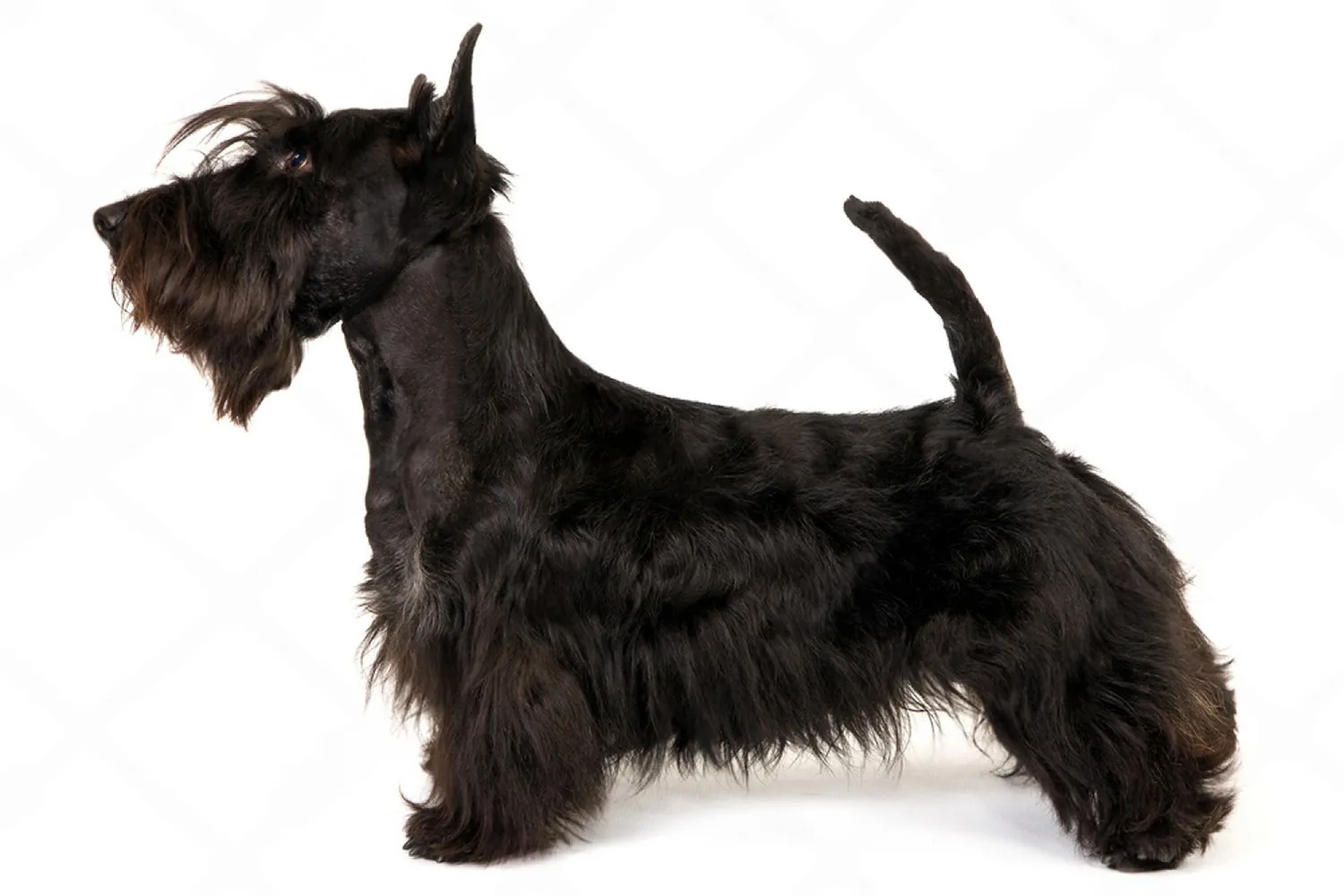
Are Scottish Terriers Easy to Train?
Short answer: they’re smart as a whip, but they like to be the boss of their own brains. Scottish Terriers are clever, independent, and delightfully sassy. That mix means training isn’t impossible it’s just a little…negotiated. They don’t usually blow you off to be stubborn; they’d simply rather solve the puzzle their way. I remember teaching a Scottie a simple “down” and watching him try three other tricks first, just to see if one paid better. Once I turned it into a game and upped the reward, he slid into a perfect down like he’d invented it.
Positive reinforcement is your best friend here. Think praise, tiny tasty treats, and play. Keep sessions short, upbeat, and varied so your Scottie stays interested. A clicker can help mark the exact moment they get it right. Harsh corrections backfire with this breed; they’ll shut down or decide you’re not worth the meeting invite. But give them a good reason, and they shine especially in agility and dog sports. A friend’s Scottie lights up on the agility course, motoring through tunnels with that little powerhouse stride. Scent games and puzzle toys are also great outlets for their busy minds.
As with any dog, start with the basics: early socialization, simple obedience cues, and thoughtful crate training. Make the crate a cozy den and it becomes a handy tool for house training and teaching calm. One tip from my own routine: practice recall on a long line at first terrier curiosity is strong and teach “watch me” and “leave it” early. With patience, consistency, and rewards that feel worth the work, a Scottie will meet you in the middle and make you laugh along the way.
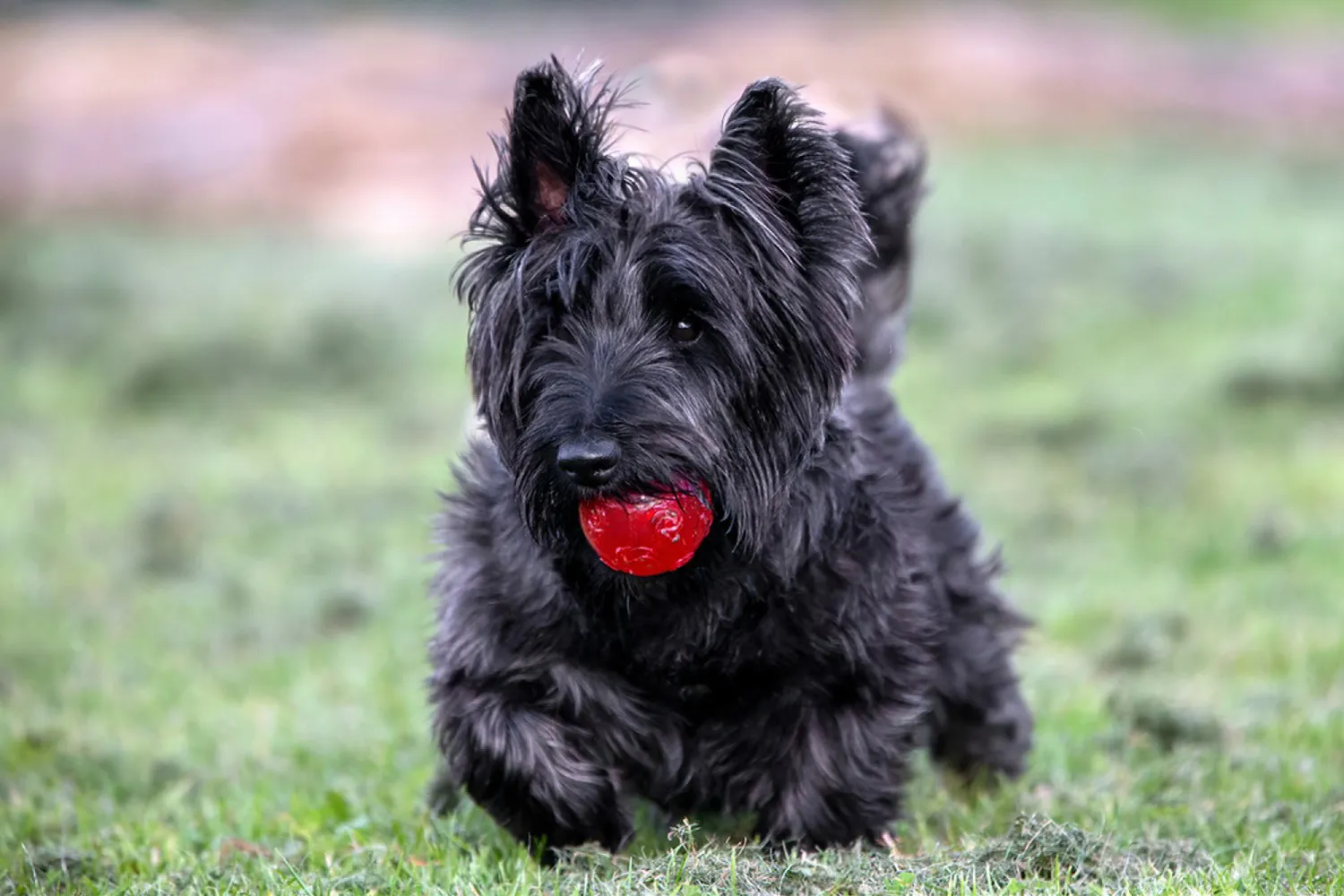
How Do Scottish Terriers Behave? A Look at Their Temperament and Personality
Scottish Terriers are little characters with big opinions. They can match the mood of your home in a way that always amuses me zipping around with a toy after breakfast, then snoozing under the desk while you work, and later posting up in the hallway like a tiny night watchman. I once dog sat a Scottie named Fergus who would trot a tidy patrol of the living room, then curl near my feet (not on me, mind you) as if to say, “I’m here, but let’s keep it professional.” That sums them up nicely: sassy, self assured, and perfectly suited to life as house pets who can be energetic, playful, quiet, and relaxed all in a single day.
They’re smart and loyal, with a streak of “I’ve got this” that reads as dominance if you’re not ready for it. Think big dog confidence in a compact frame. Training goes best when it’s firm, fair, and brief five to ten minutes of purposeful work with clear boundaries. I’ve found they respond better to routines than to negotiations; ask once, reward generously, and move on. Puzzle toys, scent games, and short bursts of structured play keep that clever mind happily occupied. A breeder I spoke with in California joked that Scotties don’t do errands, they do missions and giving them small jobs around the house (like waiting on a mat while you prep dinner) really does make them shine.
While they’re not the cuddliest dogs on the block, they do love being with their people and are happiest living indoors as part of the family. Expect them to be near you rather than on you close enough to supervise, far enough to keep their dignity. They can be wonderfully fun and loving companions for older children, especially when play has some rules. Fetch in the yard, hide and seek with treats, and short training challenges are winners. With younger kids, I always suggest extra supervision and calm games, because that Scottie sass can turn into a “no thanks” if play gets too rough.
A couple of practical notes from experience: Scotties are alert and will announce visitors, so teach a quiet cue early to keep the bark in check. They also appreciate a cozy den mine adored a soft bed tucked by the sofa where he could observe the household without being in the middle of it. Give them structure, a bit of brain work, and respectful companionship, and you’ll have a housemate who brings both charm and steady company to your daily routine.
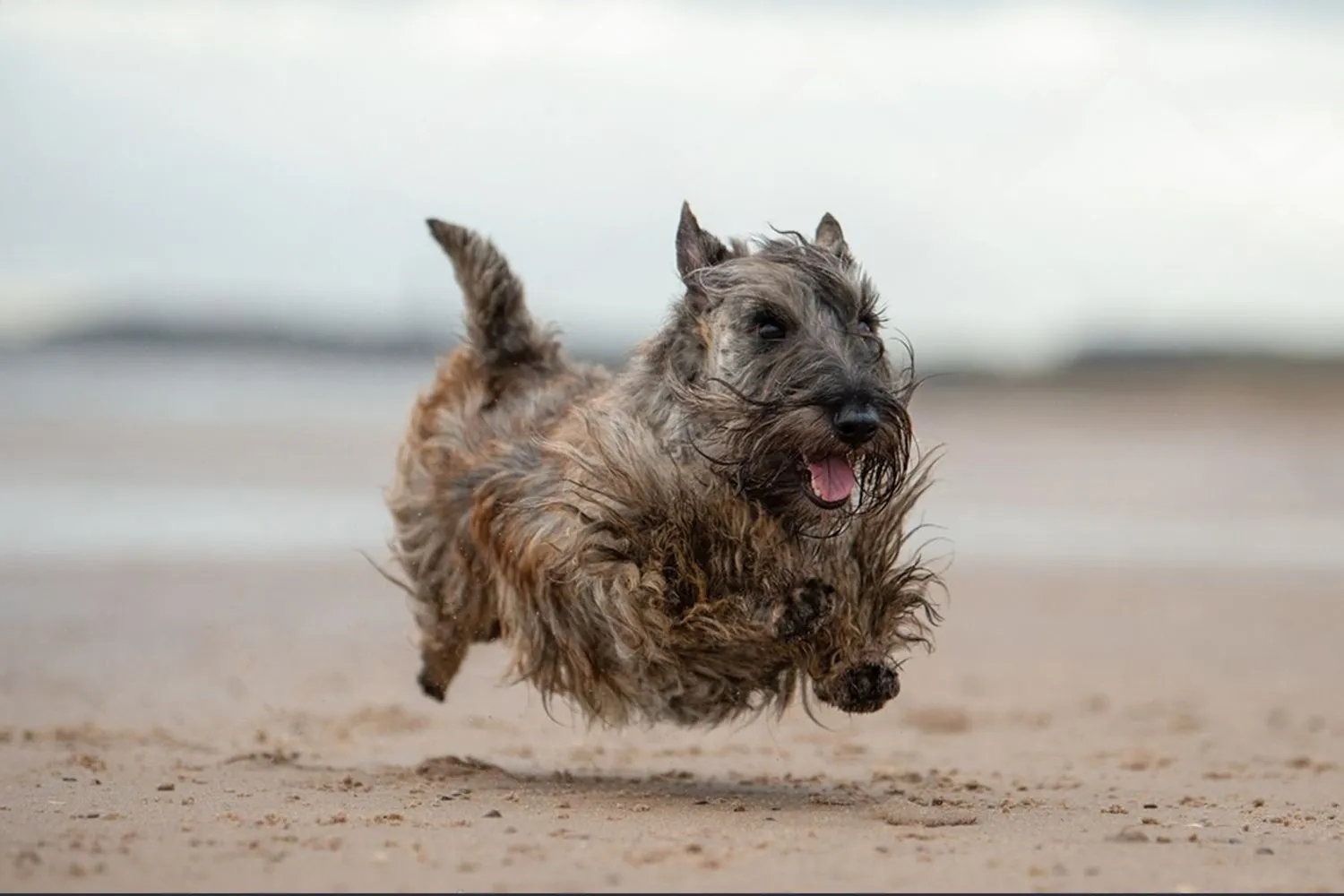
Scottish Terrier Health: Common Issues to Know
Scotties are sturdy little characters, but like all breeds, they have a few health quirks worth knowing before you fall head over heels for those brows and that big personality. A good breeder will talk openly about health, share proof of screening, and happily answer questions. And once your pup is home, regular vet checkups are your best friend catching small things early often keeps them from turning into big worries.
You might hear about Scottie Cramp. It tends to show up when a dog is very excited or stressed think post zoomies or meeting five new friends at once. The dog may move stiffly, arch the back, or do a funny goose step for a minute. I remember the first time I saw it, I thought my dog had stepped on a thorn. It looks dramatic, but it isn’t painful and doesn’t shorten their life. Keeping excitement in check, offering calm breaks, and avoiding overly intense play sessions can help. If you see episodes often, chat with your vet about management tips.
Patellar luxation where the kneecap slips in and out of place is also fairly common in small breeds. Signs include a quick skip in the step or holding up a hind leg for a few strides, then trotting off like nothing happened. Keeping your Scottie lean, building strong thigh muscles with steady walks and gentle hills, and using ramps for furniture can make a big difference. Your vet can grade the severity and discuss whether simple lifestyle tweaks are enough or if surgery might be helpful.
There’s also von Willebrand’s disease, a hereditary clotting disorder. Some dogs may bruise easily or bleed longer than expected after a nail trim or a routine procedure. Ask your breeder about genetic testing, and let your vet know before any surgery so they can plan ahead. I always keep styptic powder handy when I do nails cheap insurance.
Another condition you may see in youngsters is craniomandibular osteopathy (CMO), where abnormal bone growth around the jaw can make chewing painful. Puppies might drool, go off their kibble, or shy away from opening their mouths. Most cases improve as they mature. Soft foods, pain management, and patient care get them through the rough patch.
One more tip from long time Scottie folks: this breed has a higher than average risk of certain urinary issues, so I keep an eye out for straining, frequent potty trips, or blood in the urine and call the vet promptly. I also avoid harsh lawn chemicals, just to be safe. Whatever comes up, a trusted vet relationship, pet insurance started early, and a sensible routine good diet, healthy weight, and daily exercise go a long, long way with these brave little dogs.
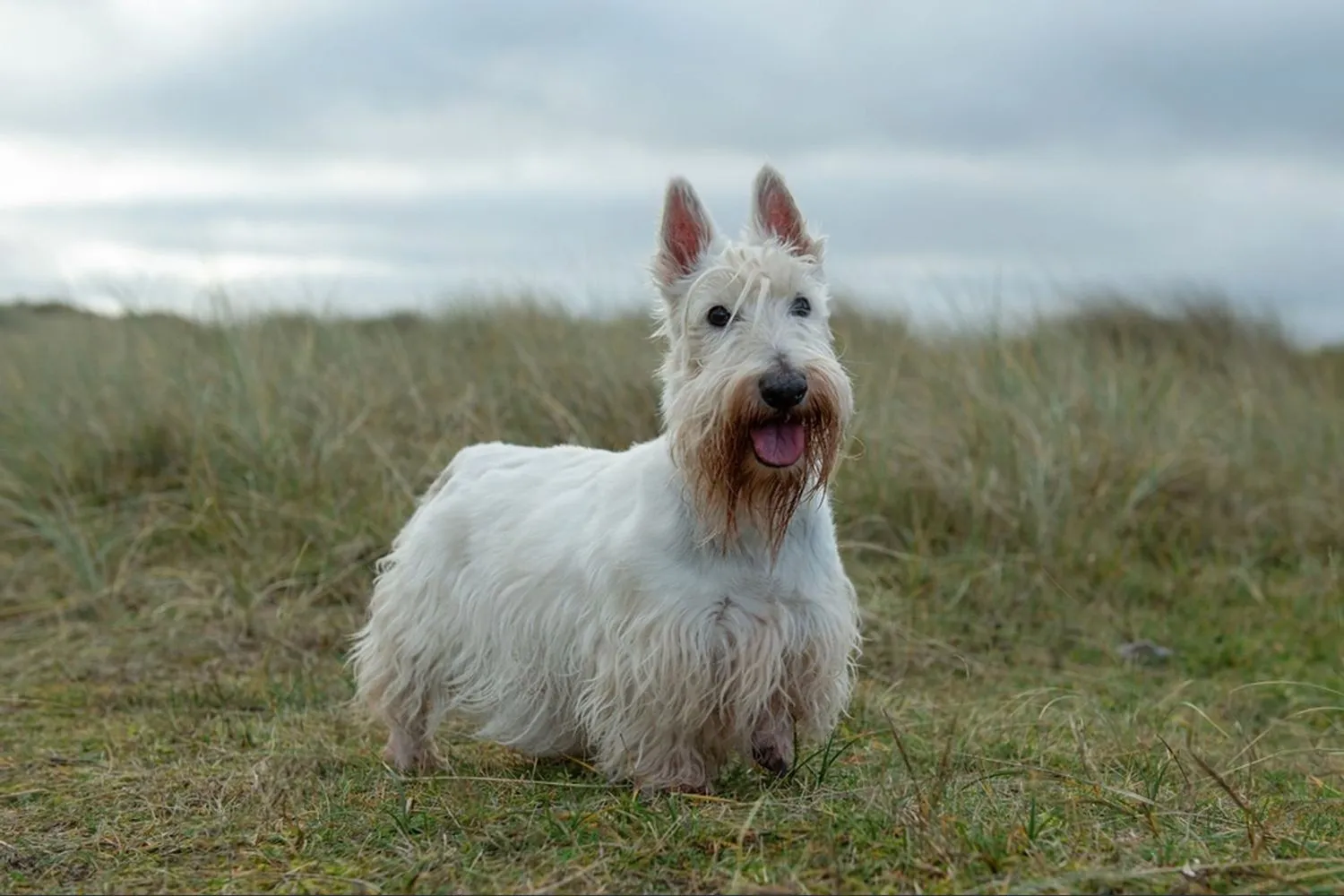
What is the lifespan of a Most Scottish?
Most Scottish Terriers live about 11-13 years, which is a lovely stretch of time for such a big personality in a small body. With good care, some make it into their mid teens I remember my neighbor’s Scottie, Hamish, proudly patrolling the sidewalk at 14 like it was his royal duty. Genetics play a role, of course, but day to day habits make a big difference too.
If you’re hoping to help your Scottie thrive, keep them lean and active short, brisk walks and plenty of sniffing do wonders. Mix in brain games like puzzle feeders; Scotties love a job. Stay on top of vet checkups and dental care, and keep that wiry coat brushed and professionally groomed so skin stays happy. As they age, add comfy beds, gentle ramps for couches or cars, and a slightly slower routine. Small adjustments, lots of love, and a watchful eye can help your Scottie enjoy those 11-13 years to the fullest.
How Much Should a Scottish Terrier Eat?
Scotties are sturdy little dogs with big personalities, but their meals should be modest and well measured. The right amount really depends on your dog’s weight, size, metabolism, and how active they are. A couch cuddling companion needs fewer calories than a squirrel spotting trail buddy. I always recommend using a proper measuring cup (or even a kitchen scale) so “a scoop” doesn’t quietly turn into “a heap.”
As a general guideline, an adult Scottish Terrier does well on about 1 to 1 1/5 cups of high-quality dog food per day, usually split into two meals. Start there and adjust in small steps. Treats count too if training snacks add up, trim the kibble a bit. I do a quick rib check once a week: you should feel ribs under a thin layer of padding, not have to dig for them. One time my Scottie slowed down over a rainy month and his waist started disappearing; I shaved off a tablespoon per meal and added an extra evening stroll, and he was back to his trim self within a couple of weeks.
Puppies need more fuel at shorter intervals while they’re growing. Think smaller, more frequent meals through the day enough to keep their tanks full without overdoing it. I like puppy formulas during this stage and use puzzle bowls to slow eager eaters; my friend’s Scottie pup would inhale dinner like a vacuum without one.
Senior Scotties typically need fewer calories than lively adults, but they still benefit from steady, measured meals. A lighter formula or a slight reduction in portion can help keep them comfortable while maintaining muscle. If you’re unsure, ask your vet for a quick body condition check and personalized feeding plan. Small tweaks make a big difference for these charming little companions.
Scottish Terrier FAQs: Loyalty, Training, and Water Wisdom
Are Scottish Terrier dogs loyal?
Absolutely. Scotties are incredibly loyal to their people, even if they don’t always show it with constant cuddles. They’re the type to choose a spot near you and quietly keep watch. I remember dog sitting a Scottie who would park himself in the hallway while I showered, then shuffle to the kitchen doorway when I made coffee always close, always on duty. They can be a bit reserved with strangers, but their devotion to family is rock solid. Don’t be surprised if they pick a “favorite” person in the house. Give them consistency, clear routines, and a little independence, and they’ll repay you with steadfast companionship.
Is a Scottish Terrier dog ideal for first time dog owners?
They’re better suited to owners who can offer gentle but firm guidance. Scotties are smart, independent, and very terrier meaning they like to test boundaries and make their own decisions. Positive reinforcement, calm consistency, and early socialization go a long way. Think short, upbeat training sessions and clear rules. If you’re a first timer determined to bring home a Scottie, line up support: a good breeder or rescue, a trusted trainer, and a plan for mental stimulation (puzzle toys, scent games) to channel that busy brain. The first time I looked after a Scottie, I learned you don’t argue with a terrier you outsmart them with better rewards and a cooler game.
Are Scottish Terrier dogs good swimmers?
Not really. With short legs and a sturdy, heavy body, Scotties aren’t built for swimming and can tire quickly. Many prefer patrolling the shoreline to paddling in deep water. If you’re near lakes or pools, keep them leashed, fit a well sized canine life jacket, and show them safe exit points. A shallow kiddie pool or a sprinkler is usually more their speed. Never toss them in to “teach” them to swim. After any splash time, dry that dense coat well I’ve had a Scottie shake off half a pond onto me, then look offended when I brought out the towel.
Disclaimer:
This article is for informational purposes only and doesn’t replace professional veterinary or training advice. Always consult a certified vet or dog trainer for guidance specific to your pup.
